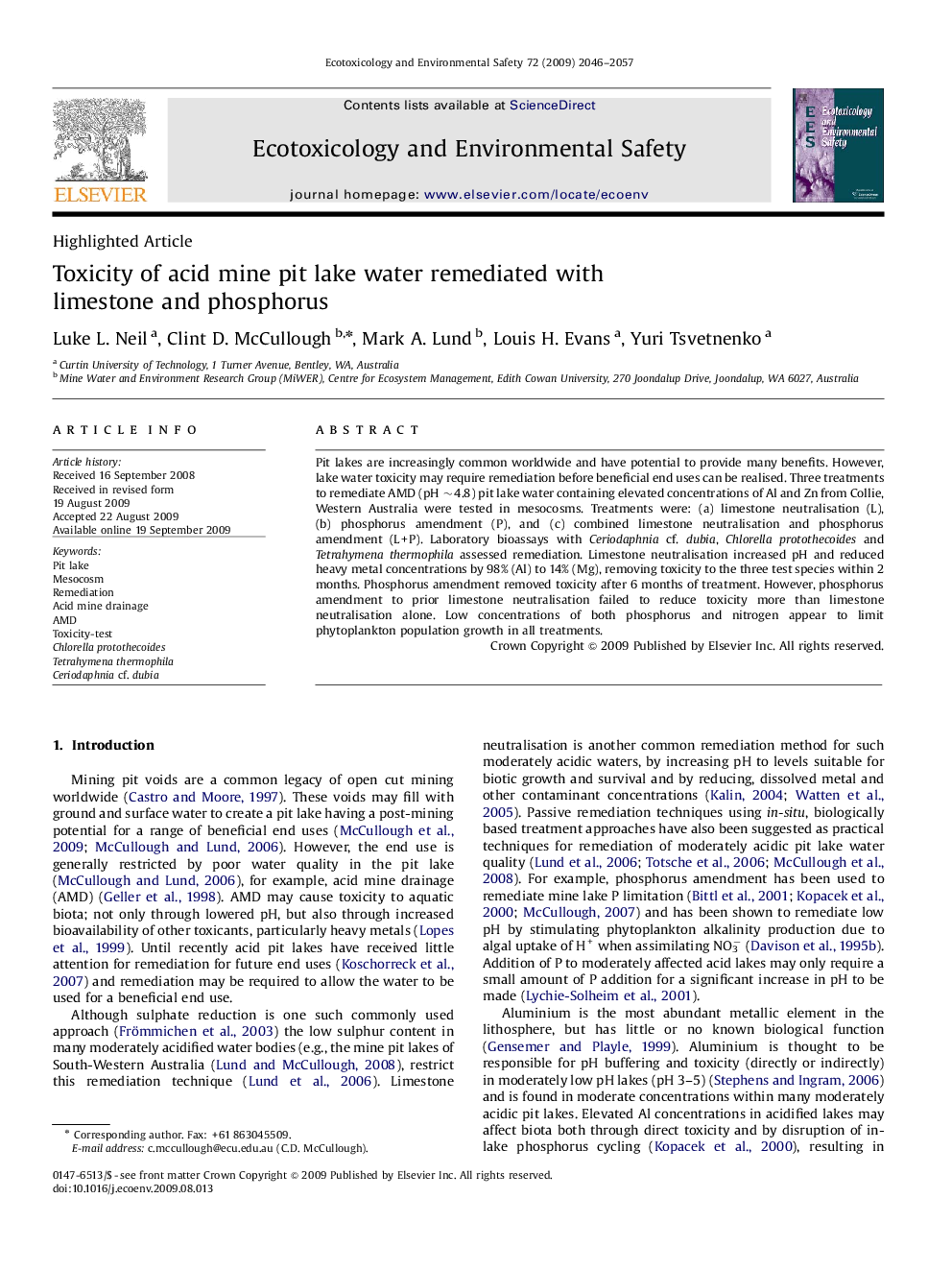| Article ID | Journal | Published Year | Pages | File Type |
|---|---|---|---|---|
| 4421505 | Ecotoxicology and Environmental Safety | 2009 | 12 Pages |
Pit lakes are increasingly common worldwide and have potential to provide many benefits. However, lake water toxicity may require remediation before beneficial end uses can be realised. Three treatments to remediate AMD (pH ∼4.8) pit lake water containing elevated concentrations of Al and Zn from Collie, Western Australia were tested in mesocosms. Treatments were: (a) limestone neutralisation (L), (b) phosphorus amendment (P), and (c) combined limestone neutralisation and phosphorus amendment (L+P). Laboratory bioassays with Ceriodaphnia cf. dubia, Chlorella protothecoides and Tetrahymena thermophila assessed remediation. Limestone neutralisation increased pH and reduced heavy metal concentrations by 98% (Al) to 14% (Mg), removing toxicity to the three test species within 2 months. Phosphorus amendment removed toxicity after 6 months of treatment. However, phosphorus amendment to prior limestone neutralisation failed to reduce toxicity more than limestone neutralisation alone. Low concentrations of both phosphorus and nitrogen appear to limit phytoplankton population growth in all treatments.
